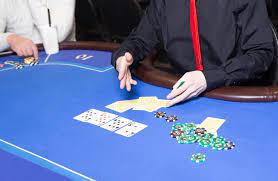The game of poker has changed in the past few years since Chris Moneymaker won the World Series of Poker Main event back in 2003. In this time, almost every card room in Las Vegas offers Texas Hold’em, Omaha, Omaha Hi-Lo, and 7 card stud. Counting out Dewavegas is definitely exaggerated, but it’s definitely possible.
Here’s how to play out poker. Counting is the only surefire way of getting an edge over the house. Whether or not it’s effective is application of combined mathematical equations, psychology, and experience. In poker, it’s all about laymen understanding the psychology of the game. Counting can give you a rough idea of the possible outcomes from the cards you are holding and the ones in the flop. First, you have to learn how to quickly calculate your odds. That can be easier said than done if you’re playing draw poker, but with a regular deck of 52, you’re difficult to do without a computer.
Once you figure this out, you’re in trouble whether it’s the turn or the river. Counting only becomes difficult when the deck is so damaged you can’t see the cards. But in a face-up game, you have to do it. The advanced players probably have a poker calculator to do this for them. This won’t be so hard if you’re playing draw poker. But if you’re playing 6-max Boost, you’re going to need something stronger if you want to have any success counting.
ictions about counting are that it involves theorticalofencingistics-a process by which an opponent’sbetting patterns create statistical illusions. These illusions allow you to make the wrong assumption about your opponent’s hand and actually increase your odds of winning a hand.
This process by fancy names is actually not entirely accurate. All hands appear to follow certain patterns because they are induced by the dialouge of the cards. When you’re sure you know the next card for the high card, you play the exact opposite to if you’re holding a set.
The truth is that blind cheating is more common in today’s poker than in any other. Statistically, a player must take about.25% of dealt hands to be able to call a raise after the flop. This means that in a limit game, a player would have to be taking about 25% of dealt hands to call a raise. Take that number and multiply it by 2.25% and add 1.25% more to get the range of an accurate percentage range. This means a player would need to be taking about 70% of dealt hands to call a raise.
There are ways to tell you when to call raises, but they’re not pretty. The first is if you’re at a loose table and it’s been a while since a raise. There might be a player who is as tight as they come and the table is a Supply/demand situation for aggressive play. The demand is low, so the pot odds don’t justify an all-in call. Sometimes you might want to call a raise with garbage in this situation, but a raise is a raise.
Another place you might want to consider calling a raise is if your hand has any chance of becoming better on the flop. Say your hand is a pair of queens and you’re up against a player with King Queen. If you’re getting good pot odds, call a raise. If you’re not getting any, simply fold. This may seem rather harsh, but your overall strategy is rather tight and if you hit a hand, you want to be sure it’s a hand you like.
Another place I consider calling a raise is if you’re in the blinds and can call a raise with a minimum of 10bb. Most players in the blinds don’t like raising very much, if at all. If you’re in such a position, you should rarely raise unless you have a premium hand.
So, those are a few spots you’ll want to consider calling a raise with. Remember that in general, you’ll want to exercise caution when doing so. Don’t call a raise unless you’re getting great pot odds. Consider your opponent before making the decision to call a raise.
